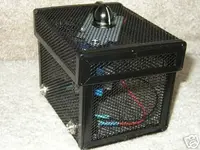rayc
retroreprobate
Hi Folks,
I bought a tube amp attenuator - the Tube Cube. I had to opt for either the 80w max or 160w max version & as it was for a Marshall 100w bass head I opted for the latter but didn't fully read the specs on that version.
The 80w madel has resist/impedance selection from 4 up & the bigger fella from 8 up.
Naturally, the speaker I wanted to work with is a 4 ohm beast (great big single 200w Etone bass beast).
Can I add an inline resistor or something between the attenuator & speaker to match i4 ohms?
How much diff/damage will running into a 4 with a unit made for an 8 cause?
I can select resist with a dial at the back of the amp - will that help?
I remain,
Yours in ignorance.
(I have to admit to guessing my way through my final high school science exams - passed but guessed nonetheless - so you can easily GUESS my science/physics/accument).
I bought a tube amp attenuator - the Tube Cube. I had to opt for either the 80w max or 160w max version & as it was for a Marshall 100w bass head I opted for the latter but didn't fully read the specs on that version.
The 80w madel has resist/impedance selection from 4 up & the bigger fella from 8 up.
Naturally, the speaker I wanted to work with is a 4 ohm beast (great big single 200w Etone bass beast).
Can I add an inline resistor or something between the attenuator & speaker to match i4 ohms?
How much diff/damage will running into a 4 with a unit made for an 8 cause?
I can select resist with a dial at the back of the amp - will that help?
I remain,
Yours in ignorance.
(I have to admit to guessing my way through my final high school science exams - passed but guessed nonetheless - so you can easily GUESS my science/physics/accument).





